Dolly Browder: America’s First Female Firefighter
Dolly Browder’s life story is one of milestones, not simply for Montana, but for women across the United States. Along with two other women, Zona Lindemann and Marcia Hogan, Browder formed the first paid fire-fighting crew for the US Forest Service — a step that led to a photo of Browder in a 1974 Mademoiselle article about women with risky professions subtitled “None But the Brave Need Apply.” She also paved the way for women in Montana to win the right to give birth at home and for the practice of midwifery to be legal in the state by becoming Montana’s first accredited direct-entry midwife. Born into a left-leaning political family in 1945, Browder’s trajectory has been one of fighting “for the underdog,” which she tells me over lunch in Missoula often means “women.”

Browder is elegant and slender with intelligent, playful blue-grey eyes. She wears a crocheted top the waitress says she loves and Browder graciously accepts the compliment. I ask her about being in the first female fire-fighting crew and about going to court to battle Montana’s medical establishment, and she admits these were both conscious political acts.
Just after moving to Missoula in the summer of 1970, when she was 24, Dolly worked as a teacher. She got bored in the summer months, and decided she would apply to be a forest firefighter. The US Forest Service laughed at her since women were not allowed to do this job. Dolly’s persistence paid off when they finally agreed to train her if she got a bunch of women together who were willing to learn the ropes. So she placed an ad in the newspaper and received replies from about a dozen women, and together they formed a group called the Red Star Crew. They were sent for training, which Dolly laughingly says was terribly inadequate: “We were shown a video and given a hard hat and that was it!”
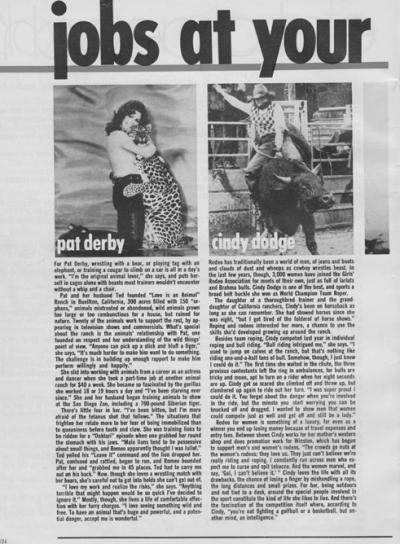
In 1972 they were sent by helicopter to a forest fire in Idaho. After fighting this one, they received a bad review from their superiors. Dolly was incensed and decided that the only way to get the Forest Service to listen to their demands was to sue them. So she did.
Shortly afterwards men in suits showed up from Washington, D.C. to interview her and others on her crew. She put forth a strong case that women should not have to set up their own crews; they should be able to fight alongside their male counterparts. For the first time, she was heard. The whole thing was kept quiet and solved internally. To this day, she is loath to speak about it as she was urged not to mention the litigation publicly. But Dolly feels that the Forest Service learned from this whole affair. Since her battle with them, women have been hired in high positions along with men — and in great numbers. She credits the Forest Service for moving with the times.




When I ask her about her political leanings, she says that both her father and grandfather were card-carrying Communists. This was particularly difficult for her father who was active in the 1950s when McCarthyism was at its height. Whether it is in her blood or simply a result of an early political awareness, Dolly’s life is one of championing women’s rights to equal work and pay as well as the more personal right to be in charge of the most primal act of creation: that of giving birth.
“Where does it all come from?” she asks as if mystified by her own drives and desires and lets out a laugh.

In 1976 when she was pregnant with her first child, Browder decided to have a home birth. This was at a time when women didn’t do this. There were virtually no natural birthing books, let alone any information available to help women understand the process of bringing a child into the world. The birth went well, despite “bringing her to her knees”, but she did end up having to go to the hospital when her placenta wouldn’t come out. In the hospital she got some fierce and unpleasant lectures from a range of people — from the cleaners to the doctors who accused her of risking her daughter’s life.
Browder’s personal experience planted the seed that grew into her desire to allow women a more natural and less invasive birth experience. When two Californian midwives moved to Montana, Dolly teamed up with them. She started a study group with some local Missoula women to learn all she could from the two new midwives in town. By 1977, she started going to births and helping deliver babies in women’s homes. Since then, she has helped bring close to 1,000 infants into the world.
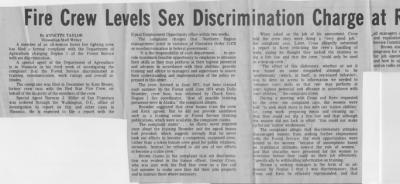
It wasn’t until 1988 that real controversy struck. Dolly was attending the birth of a baby whose mother was a nurse. Dolly noticed some problems with the baby’s heartbeat and suggested they go to the hospital. When they arrived, the doctor in charge was checking the mother, ignoring Dolly’s assertions that the mother was fine — it was the baby who needed help. The fact that Dolly was assisting in a home birth became a huge red flag to the medical community — and in particular to the doctor on duty that night.
Midwives weren’t so much “illegal” as “alegal” at that time, she tells me, because in Montana they could only practice in a hospital under a physician’s supervision. Dolly was charged with practicing medicine without a license. She endured three gruelling days in court and was eventually found guilty. Her case was a catalyst that influenced the state legislature to pass laws that made midwifery a legal practice. In 1989 seven women took their midwifery exams and passed. She received license number 1 she tells me proudly. She then helped set up the national professional organization for certified professional midwives (NACPM), a body which is still growing to this day.





“I believe in luck and providence,” Dolly says.
And I agree that she seems to have a knack for being in the right place at the right time. After thirty-seven years of practicing midwifery she has just retired.
“Do you miss it?” I ask.
“Not any more,” she replies, betraying something a bit like acceptance. “I’m writing now,” she says.
She is working on her memoir, which must be daunting considering the wealth of material.
I finish by asking her whether she feels feminism is something young women today identify with.

“I don’t know where the feminist ideal is today,” she says, adding that she doesn’t feel completely qualified to say. But she has spent time recently in universities trying to get the message across about the importance of midwifery and she was shocked at the lack of knowledge and confidence that many young women display when it comes to their bodies, their rights and their abilities.
We say our goodbyes and agree to stay in touch. I look forward to reading her memoir. A story that she admits is about making sense of herself and where her personal and political urges have taken her throughout her life. A story that even without knowing it, we have all benefitted from.


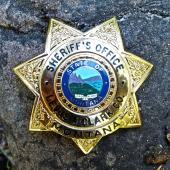


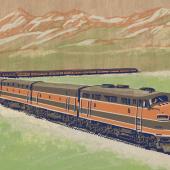
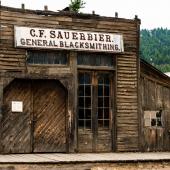





Leave a Comment Here